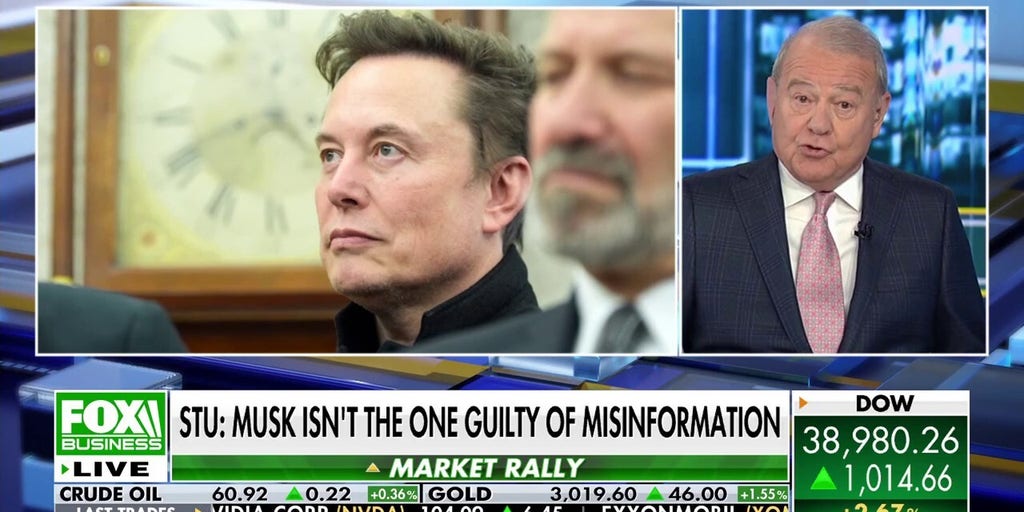Stuart Varney Defends Elon Musk Against Misinformation Claims, Highlighting Twitter’s Past Practices
Fox Business host Stuart Varney recently came to the defense of Elon Musk, arguing that the billionaire entrepreneur is not the primary culprit in the spread of misinformation on Twitter, now rebranded as X. Varney contends that the platform’s previous management, pre-Musk’s acquisition, bears a greater responsibility for allowing misinformation to proliferate. He points to Twitter’s historical tolerance of certain narratives and suppression of others, suggesting a pre-existing bias that Musk is now attempting to rectify. Varney’s stance challenges the prevailing narrative that portrays Musk’s leadership as exacerbating the misinformation problem, framing the current situation as a consequence of inherited issues rather than newly created ones.
Varney’s argument centers on the idea that Twitter, under its previous leadership, actively engaged in shaping narratives and controlling information flow. He cites examples of alleged censorship and promotion of specific viewpoints, suggesting a deliberate manipulation of public discourse. This manipulation, Varney argues, created an environment ripe for misinformation to flourish, a problem that predates Musk’s involvement. He suggests that Musk’s efforts to promote free speech, while potentially messy and controversial, are ultimately aimed at dismantling the pre-existing structures that facilitated the spread of misinformation in the first place.
The Fox Business host further develops his argument by highlighting the complexities of defining and policing misinformation. He points to the inherent subjectivity involved in determining what constitutes "truth" and the challenges of consistently applying standards across a vast and dynamic platform like X. Varney suggests that the focus on Musk as the source of the problem overlooks the broader challenges of content moderation in the digital age, challenges that any platform owner would face. He emphasizes the need for a nuanced approach to the issue, one that moves beyond simply blaming individuals and addresses the systemic factors contributing to the spread of misinformation.
Varney also addresses the criticisms of Musk’s content moderation policies, particularly the reinstatement of previously banned accounts. He frames this move as part of Musk’s commitment to free speech principles, arguing that even controversial voices should be allowed a platform. While acknowledging the potential risks associated with this approach, Varney suggests that open dialogue, even with those holding unpopular or potentially harmful views, is ultimately preferable to censorship. He argues that suppressing viewpoints, even those deemed misinformation, can create an environment where such ideas fester and spread underground, making them harder to counter.
The discussion also touches upon the broader implications of Musk’s approach to content moderation for the future of online discourse. Varney suggests that Musk’s experiment at X, while potentially turbulent, could serve as a valuable case study for navigating the challenges of free speech in the digital age. He posits that the lessons learned from X’s evolution could inform the development of more effective and balanced content moderation policies across other platforms, ultimately contributing to a healthier and more robust online public sphere.
In conclusion, Stuart Varney’s defense of Elon Musk reframes the narrative surrounding misinformation on X. He argues that Musk inherited a platform already riddled with problems stemming from previous management’s approach to content moderation. He highlights the complexities of defining and policing misinformation, advocating for a more nuanced approach that goes beyond blaming individuals and addresses the systemic factors at play. Varney portrays Musk’s efforts, albeit controversial, as a potential learning opportunity for the entire social media landscape, potentially leading to more effective strategies for fostering free speech while mitigating the spread of harmful misinformation. While the long-term impact of Musk’s leadership at X remains to be seen, Varney’s perspective offers a counterpoint to the dominant narrative, urging a more comprehensive understanding of the challenges and potential solutions to the misinformation crisis.


